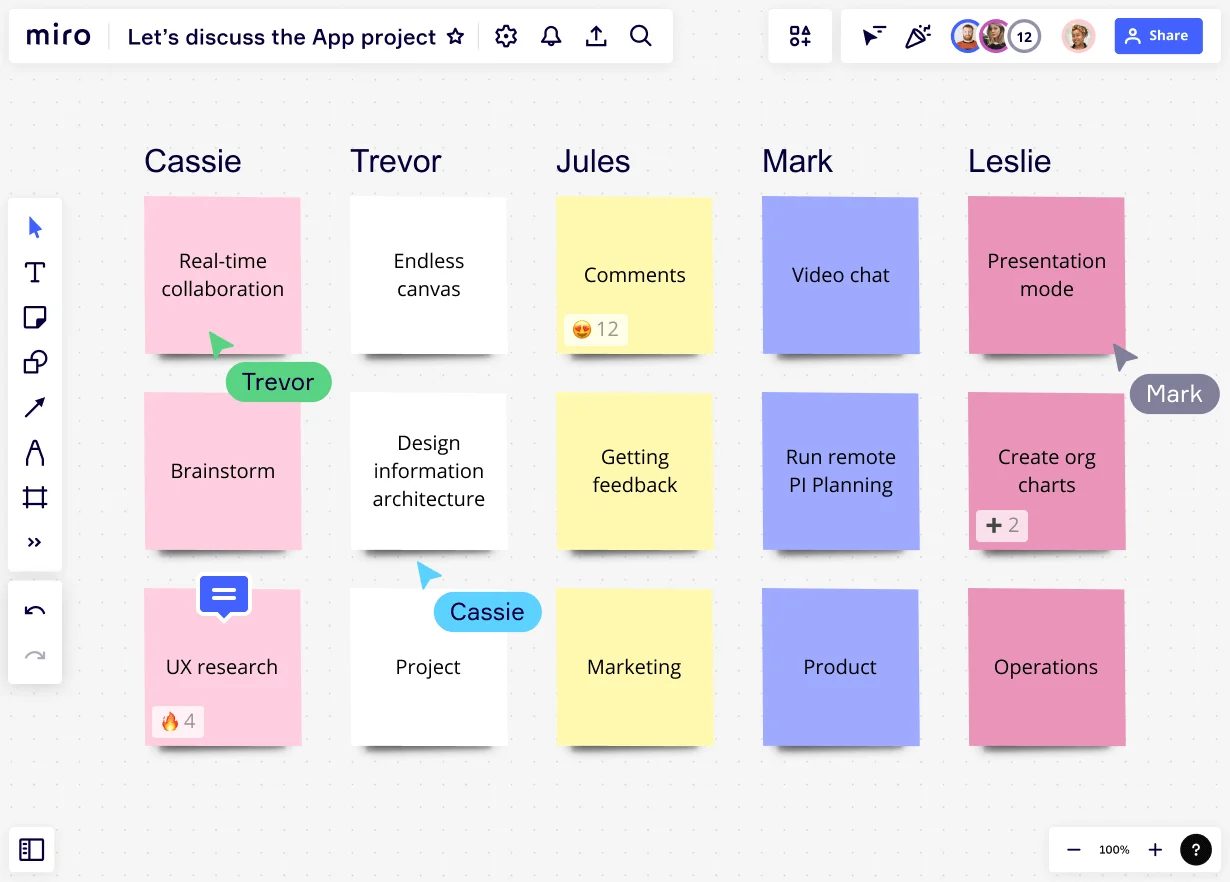
Reverse brainstorming

What is reverse brainstorming
Reverse brainstorming has emerged as a game-changing innovation and problem-solving technique. Many people wonder what reverse brainstorming is and how it relates to the traditional brainstorming process.
Reverse brainstorming is a technique that revolutionizes the conventional brainstorming process by turning it upside down. Unlike traditional brainstorming that focuses on generating solutions, reverse brainstorming centers around identifying problems or obstacles. By exploring the negative aspects, flaws, or challenges associated with a given topic, reverse brainstorming stimulates critical thinking and encourages participants to delve deeper into the heart of the issue.
The benefits of reverse brainstorming
There are a few benefits of reverse brainstorming that have a positive impact on the team and its individual members.
Encourages critical thinking
Reverse brainstorming serves as a catalyst for critical thinking, prompting participants to question assumptions and challenge the status quo. By shifting the focus from solutions to problems, individuals focus on exploring the root causes and underlying factors, leading to a more comprehensive understanding of the problem and challenge. Through critical thinking, new insights emerge, which can lead to innovative problem-solving.
2. Shifts perspective
One significant benefit of reverse brainstorming is its capacity to change the perspective of the participants. By deliberately focusing on the negative aspects of a topic, this technique breaks the conventional pattern and introduces fresh avenues for creative thinking. It encourages participants to venture beyond their comfort zones, urging them to examine the problem from various angles and explore unconventional approaches. Reverse brainstorming creates the opportunity for finding new, innovative solutions for problems.
3. Unleashes creativity
Creativity flourishes when limitations are embraced, and reverse brainstorming provides the perfect playground for imaginative thinking. By generating a list of "anti-solutions" or exploring the worst possible scenarios, participants are encouraged to think outside the box. In reverse brainstorming sessions, participants generate new and unique solutions that may have been overlooked in traditional brainstorming sessions.
4. Enhances collaboration
Reverse brainstorming fosters a collaborative environment where team members can freely contribute their thoughts and ideas. By focusing on identifying problems rather than proposing solutions, it creates an open and non-judgmental space that encourages active participation. The diverse perspectives that are exposed in collaborative reverse brainstorming sessions often lead to richer discussions, deeper insights, and more innovative outcomes.
Applications of Reverse Brainstorming
Reverse brainstorming finds widespread applicability across various domains as a go-to method for effectively tackling specific challenges and uncovering optimal solutions. Reverse brainstorming can be practiced either through an online brainstorming tool or in-person settings, such as conducting workshops with a team.
1. Product and service innovation
Reverse brainstorming can be a valuable tool for product and service innovation. By pinpointing flaws, potential issues, or customer pain points, organizations can proactively address them, leading to improvements, refinements, and the development of new features. Reverse brainstorming helps in identifying potential pitfalls or challenges early on in the design or development process, ensuring a more robust final product.
2. Process improvement
Efficiency and productivity are paramount in any organization. Reverse brainstorming can be applied to identify bottlenecks, inefficiencies, or outdated processes. By examining the obstacles and problems within existing workflows, reverse brainstorming enables teams to explore innovative ways to streamline operations, optimize resource allocation, and enhance overall productivity.
3. Problem-solving in various fields
The versatility of reverse brainstorming makes it applicable to diverse fields such as business, education, healthcare, and technology. By emphasizing problem identification, reverse brainstorming enables a deeper understanding of the issues at play, paving the way for more effective problem-solving